- Home
- Sebastian Faulks
The Fatal Englishman Page 4
The Fatal Englishman Read online
Page 4
With Violette Murat came drugs, though Wood had already been introduced to opium by Tony Gandarillas, and it played a crucial part in his life and death. Opium is the milk from the green capsule of the poppy indigenous to Indo-China and parts of Turkey. The European centre was Smyrna, which was possibly one reason Gandarillas and Wood made their ill-advised detour there in 1922. By the time the opium reached Paris it had the consistency and colour of treacle. A pin was dipped into it to pick up a blob of opium which was held over a small flame until it bubbled and expanded to about the size of a large pea; it was then plunged into the pinhole opening of an 18-inch pipe. The pipe was reversed over the flame while the smoker inhaled, preferably taking the entire contents in one draught.
Opium did not disable the smoker physically, like strong cannabis, or leave him feeling mentally befuddled; it gave, on the contrary, a sensation of controlled euphoria. All things seemed possible: the intellect, far from being impaired, felt regally empowered. Conversations, books, pictures and the natural world appeared charged with profound meaning and interest, all of it made magically available to the mind of the smoker; food, particularly the flavours of Far Eastern cooking, became more intriguing and more intensely enjoyable. Compared either to cannabis or to its own derivative, heroin, opium was refined, civilised and intellectual.
Above all opium lived up to its Homeric name – nepenthe, the destroyer of grief. Graham Greene recorded that after four pipes, ‘unhappiness and fear of the future became like something dimly remembered which I had thought important once.’ Thomas de Quincey, who took opium in alcohol as laudanum, wrote: ‘Here was a panacea … for all human woes: here was the secret of happiness about which philosophers had disputed for so many ages, at once discovered: happiness might now be bought for a penny, and carried in the waistcoat pocket: portable ecstasies might be had corked up in a pint bottle.’ Opium was a princely drug – flattering, powerful and enriching. While many native Chinese had learned how to live with it over generations, nervous European types like Christopher Wood found it difficult to control the euphoric genie they had released from the pipe.
The morning after, he would be back in his studio in the rue des Saints Peres. In the spring of 1924 he was working on a large nude in oils as well as copying drawings by Raphael, Leonardo and Titian. He was struggling also with what he called the ‘almost suffocating influence of modern art’. He both appreciated what had been done, and knew, as a proper artist, that he had to make some accommodation with it; yet his own strength was not in Cubism, Dada or Surrealism. He had to find a way of absorbing the modern without disturbing the originality of his own distinctive, but essentially old-fashioned talent. And this in turn had to be achieved with Violette Murat laying out lines of cocaine in the bathroom.
At this time, despite the drugs and the bad company, the tensions of Wood’s life still resolved themselves as comedy. He sat on the Louis XIV lit de repos in his little apartment within Gandarillas’s house on the Avenue Montaigne and looked about him. There was a big open fireplace in which a fire burned all day. The room was panelled, with one wall entirely taken up by books. Outside there was a courtyard from which he could hear the splashing of a fountain; it made him think of home, and how happy he had been as a child, before everything was spoiled by the War years. He did not pine for England any more; he believed that the only possible life there for a young man was to ‘stagnate or become a merchant and the owner of a small villa on the outskirts of some provincial town’. While he regretted that he had had no choice but to separate himself from his family, he did not doubt that he had made the right decision.
In February Tony Gandarillas was offered the Chilean ambassadorship to Paris. He refused, much to Wood’s relief, on the grounds that the entertaining would cost him too much. In March the two of them set off once more on their travels. Wood had wanted to return to Rome because he felt he would be inspired there, and Gandarillas was happy to oblige. They travelled by way of Corsica, Leghorn and Pisa, and once in Rome Wood found himself thrilled by the Coliseum, the via Appia and the Villa d’Este. He enthused about almost all the places that he visited with Gandarillas, but Rome was the one with which he had the truest affinity.
He noticed that a man called Mussolini was much admired by the Italians; in fact they knelt down when he went past them in the street. One morning as Wood and Gandarillas were driving through Rome their car was stopped in the traffic. Wood looked out of his window and found himself face to face with II Duce, whose car was going in the opposite direction. It was a momentary glimpse, a single tableau, before their cars rushed onwards into the Roman traffic, but it was typical of the way Wood glimpsed politics and public affairs as they worked themselves out into history. The process by which world events in their turn eventually affected his private, self-absorbed life was longer and more subtle.
The stay in Rome was again shorter than Wood might have wished, and after a visit to Florence, where he saw paintings by Titian, Leonardo and Botticelli, they returned to Paris. Wood’s sister Betty was visiting, and although her parents had made other arrangements for her accommodation she was allowed to see Kit a couple of times: he in turn spared her the attentions of Violette Murat.
In May Wood visited Princess Radziwill at her chateau near Paris, in the grounds of which Jean-Jacques Rousseau was buried. She told him how she had witnessed the death of Rasputin, and how neither poison nor the revolver bullets that thudded into his body seemed able to kill him. There were a number of Rasputin bores at large in Europe at this time, though the Revolution had also driven to Paris some of the most cultured and attractive White Russians, as Wood later discovered to his delight.
Neither he nor Gandarillas had fully recovered their health since the malaria episode; Wood complained that he had been ill constantly since the age of fifteen. He was receiving injections for anaemia while Gandarillas was having problems with his lungs. In the early summer Wood tried to escape the demands of society by reading in the evenings. He found it hard to remember in detail what he read and wondered whether this was a sign of a basic intellectual weakness – the side-effect of his abandoned education. Something he had read which did remain with him was an epigram from Lamartine: ‘La vie doit avoir un courant, l’eau qui ne coule pas se corrompt’ – ‘Life should have a current; water which doesn’t flow becomes stagnant.’
The current of his own life swept him down to the south of France in the summer, to Le Canadel, a resort in the Var, where Jean Cocteau and Moise Kisling were also staying. Wood was so tired by Paris that he showed little interest in either of them, though both were substantial figures. Kisling had come from Poland but acquired French citizenship by fighting in the Foreign Legion. His painting had developed from his early days with Bonnard and Vuillard through his membership of the Picasso-Braque-Max Jacob group, and had had enviable commercial success.
At the end of August, Gandarillas took Wood down to Spain, where he was impressed by the Goyas in Madrid and a bullfight in Malaga, the birthplace of Picasso. But they then returned to Le Canadel, which Wood thought a ‘godforsaken little spot’. Although he claimed to be uninspired by it, his painting did progress there. He was set on further simplification of colour in the manner of Van Gogh, who became a visible influence at this stage. His confidence began to seep back. ‘I know I can be a great artist,’ he wrote to his mother, ‘because I understand and feel the things I like so much if I can only be left with them.’ The paintings by now had style and feeling, but they were still awkward: the influences of other painters were not fully assimilated.
The coming of autumn softened the colours of the countryside and Wood’s hostility to it, but at the end of October they moved to Villefranche, a fishing port on the Riviera, whose modest quayside inn, the Hotel Welcome, became for a few years in the mid-twenties a legend of tawdry glamour. Villefranche was a medieval town with small streets and big stone archways, with a bay in front and mountains behind, whose steep slopes were covered with olive and c
ypress trees. The Hotel Welcome was dominated by the figure of Jean Cocteau, who had a comer room with balcony on the first floor. He attracted many artists and musicians from Paris who were delighted to be joined by the rougher trade from the American naval ships and the prostitutes from Marseille and Nice who came down to service them.
Among the visitors to the hotel were the musicians Honegger and Milhaud (two of the group known as Les Six that also included Poulenc and Georges Auric), Picasso, Stravinsky, Hemingway and Fitzgerald. The corridors stank of opium and the dining room was filled with the sound of self-conscious artistic conversation. The elements of talent and pretension were, as in Paris, indissoluble. Isadora Duncan, who had first prompted Diaghilev to bring his Russian Ballet to Paris, now just made scenes. The English writer, Mary Butts, a devoted opium smoker with tangled red hair, wrote regional novels of the English West Country with mystic overtones.
In addition to the creative, the narcotic and the ridiculous, the Hotel Welcome could offer more: religion. A sinister young seminarist called Maurice Sachs was the subject of frenzied ogling when he danced on the table in cassock and pink socks. Max Jacob, the poet and friend of Picasso, found that his new Catholic faith was not enough to keep him from the terrible draw of the Hotel Welcome and its troupe of handsome young men, most of whom had been brought down for the delectation of Jean Cocteau. One of these youths, called Jean Bourgoint, habitually wore the uniform of the French army. Other regulars were the delicate artist and decorator Christian Bérard, known as Bébé for his cherubic expression, and the writer René Crevel. It was a circus of dubious taste whose clashing elements were united by sexual self-interest.
It was not Huyton. Even after three years in Paris Christopher Wood seemed gauche. He had brought some watercolours to show Cocteau, and another English visitor, Sir Francis Rose, himself only a teenager at this time, described Wood’s anxiety about his work. To Rose he appeared a ‘lame and timid young man, with his strange, handsome English schoolboy’s face’.
Wood was overwhelmed by Jean Cocteau. He believed him to be a genius in drawing, writing and conversation: he was simply the arbiter of what was elegant or worthwhile. Wood believed he had made friends with him and was proud to have done so.
Cocteau was a man of great gifts, many of them on permanent display. He had burst into Paris at the age of sixteen at a ball given by Madame de Chavannes at the Opéra. He appeared dressed as Heliogabolus, the most dissolute of all Roman emperors, carried on a litter by two Nubian wrestlers. It was an entrance to which he had lived up as poet, draughtsman, librettist, talker, impresario and self-publicist with a lifelong passion for what he had to sell.
Edith Wharton remarked of Jean Cocteau that no one had ever made her understand better the lines of Wordsworth ‘Bliss was it in that dawn to be alive/ But to be young was very heaven.’ Cocteau was thirty-five when Wood met him in 1924 but had made a fetish of his own youth. He ran away to sea at the age of fifteen and published his first poem in 1908 when he was nineteen. The financial support of his mother allowed him to indulge his talents. He brought out a magazine called Schéhérézade in 1908 which belonged in essence to the fin de siècle: its little drawings had a touch of Decadent mascara. When Modernism burst on the world shortly afterwards Cocteau was swift to adapt his ideas; but in the 1920s the fact that he could trace a line back to the old days helped him to rise above the competing manifestos of Dada, Futurism and Surrealism. As well as being a perpetual enfant terrible, he was old enough to know better.
Cocteau infiltrated himself behind the scenes of the Russian Ballet. He liked everything about it – the snobbery, the glamour, and particularly its principal dancer, Vaslav Nijinsky. Diaghilev hired him to work as a publicist, but forbade him access to the showers. In 1915, Cocteau made up for this by joining an ambulance unit run by his friend Comte Etienne de Beaumont, one of Paris’s greatest party-givers. The unit included shower-baths in which Cocteau took numerous photographs, celebrating the experience in a poem called ‘La Douche. He recalled the bodies with sensual pleasure, particularly the part that fascinated him all his life – ‘Je ne crois guère aux hommes de petite verge’ (‘I can’t really believe in men with a small prick’). Throughout the war he commuted back to Paris, where he struggled to stage a ballet called Parade. When the ballet opened in 1917 he called it ‘the greatest battle of the War’, a tiny provocation to the French army, then in full-scale mutiny over the epic loss of life on the Chemin des Dames.
Cocteau befriended the aviator Roland Garros and flew with him on several occasions. Garros was involved with trying to develop a machine gun that fired through gaps left as the propeller rotated. Cocteau claimed that Garros had solved the problem by watching an electric fan in Cocteau’s mother’s flat in the rue d’Anjou. Garros was killed on a mission in 1918 and Cocteau dedicated his book of poems Le Cap de Bonne Esperance (The Cape of Good Hope) to him. The figure of the airman had caught his imagination, just as it had appealed to Proust, who visited the aerodrome and in Albertine Disparue compared some wheeling, looping angels in a Giotto fresco to ‘the young pupils of Roland Garros’.
The best and worst of the period, the brilliant and the cheap, the beautiful and the spurious, met in the person of Jean Cocteau. He appropriated a bar called Le Gaya, initially as a snub to the Dada movement, but then found he liked being a nightclub manager. It was succeeded by Le Boeuf sur le Toit, the definitive bar for visiting Americans.
When Wood met him in 1924 Cocteau was in mourning for his lover, Raymond Radiguet, a boy comet he had met at Max Jacob’s house when Radiguet was only sixteen. Radiguet produced a novel called he Diable au Corps, which was widely acclaimed as a masterpiece, but died of typhoid, apparently contracted from bad oysters, in December 1923, still only twenty years old.
Cocteau’s ostentatious mourning led Parisians to apply to him the word ‘veuf’ (widower), usually in the vicious sobriquet ‘le veuf sur le toit’. A friend called Louis Laloy suggested his grief might be assuaged by opium and Cocteau took to the drug so readily that he smoked it for the rest of his life. He was shrewd enough to buy only the best and to treat it with the respect it required. He went through two cures for smoking, though the literary benefits that accrued, both in the books he wrote about it and in the quiet that the sanatorium gave him to consider other projects, led Stravinsky to comment that ‘the chief purpose of the drug-taking came to be book-making’.
The impressionable Christopher Wood sat in Cocteau’s first-floor room watching him at work. From Picasso he had learned the trick of making a drawing with a single line, without taking the pencil from the page. Wood, who often struggled with his line, was suitably awed. Cocteau talked to Wood about opium and shared his delight in the ritual aspect of smoking. The pipes were best prepared by Chinese ‘boys’ while the smokers lay back and awaited their pleasure. ‘People talk about the “enslavement” of opium,’ Cocteau wrote; ‘but taking it at regular hours is in fact not only a discipline but a liberation … It reassures by virtue of its air of luxury, its rites, the elegance of its non-medical lamps, flames, pipes and by the secular ritual of its exquisite communion.’
Most of what Cocteau said was true, but with the weighty provisos that the smoker should be rich enough to buy the best drug, self-disciplined enough not to abuse it, and should come to it in a state of mind that was not vulnerable or unbalanced. None of these serious reservations would have counted with Wood, who was in the first rapturous glow of hero-worship. Under Cocteau’s influence, Wood’s use of opium, which had been an occasional indulgence with Gandarillas, became a regular habit.
Cocteau left Villefranche at the end of November 1924 to travel to London with Diaghilev’s ballet for the opening of Milhaud’s Le Train Bleu, decorated by Henri Laurens with a curtain by Picasso, for which he had written the libretto. By December he was back in Paris, smoking heavily, and seeing Christopher Wood. He encouraged him in his painting and promised to bring Picasso to come and look at it. In return Wood offered
to share his studio with him. Cocteau accepted, and the arrangement worked well because Wood was a morning worker and Cocteau seldom left his mother’s house before noon.
Wood was thrilled by his own life and confused by public events. He believed that there was panic in Paris because everyone was expecting a revolution, but he was too absorbed by his work to find out what it was all about. He told his mother that ‘I hope to goodness there is not’ a revolution; but having escaped the massacre of Smyrna he felt no particular need to take any precautions against mobs in the seizième. He returned to the easel.
Cocteau arranged for him to go to classes with Andre Lhote, who was regarded as the best teacher of composition in Paris. He also took him to a doctor who diagnosed acute anaemia and put him on a further course of iron and arsenic injections. Cocteau told Wood he had more talent for painting than anyone he had ever met.
It was almost enough to turn a young man’s head; though there is no evidence that it did. One of the ways in which Cocteau kept himself youthful was by taking young lovers, and Wood’s handsome naïveté was exactly what appealed to his taste. At about this time, however, while Wood’s regard for Cocteau’s achievements in no way diminished, he formed the opinion that he was a ‘most jealous and selfish person’. If some sexual incident took place it made no impact on either man, or on their relationship, in which Cocteau for all his selfishness continued to encourage, and Wood to learn.
In February 1925 Wood saw his old friend Drian, who, to his hilarious disgust, had taken to painting people’s ceilings with a picture of the owner, his house and a map of the surrounding countryside. Wood meanwhile invited his mother to come and stay in his studio in the rue des Saints Peres, where he still officially lived. She came in March, and the visit passed off in perfect harmony. It was what Wood most wanted: to paint all day long with his mother in the background and his father several hundred miles away. When Clare Wood returned to Huyton Kit wrote to her as though they were adulterous lovers, waiting for the day when the impediment to their happiness would be removed. He did not say how he expected this to happen, but quoted his favourite proverb: ‘Tout s’arrange dans la vie.’

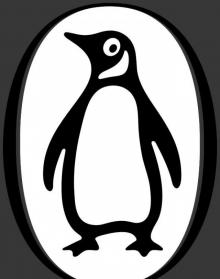 Devil May Care
Devil May Care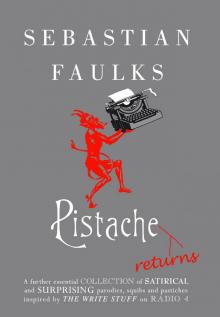 Pistache Returns
Pistache Returns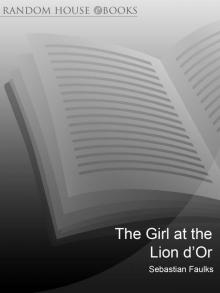 The Girl at the Lion D'Or
The Girl at the Lion D'Or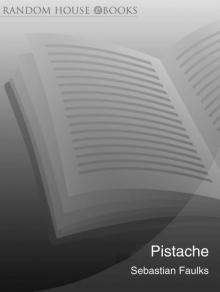 Pistache
Pistache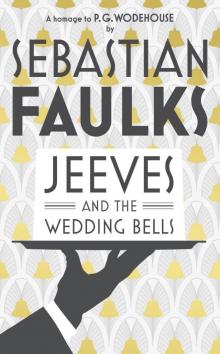 Jeeves and the Wedding Bells
Jeeves and the Wedding Bells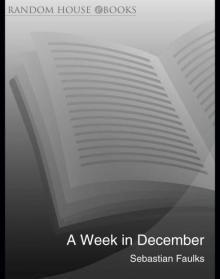 A Week in December
A Week in December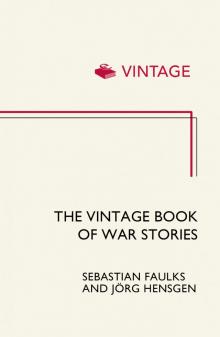 The Vintage Book of War Stories
The Vintage Book of War Stories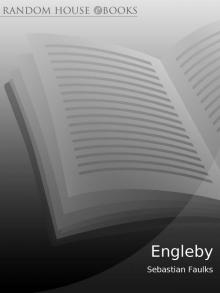 Engleby
Engleby Birdsong
Birdsong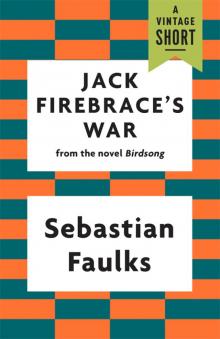 Jack Firebrace's War
Jack Firebrace's War Where My Heart Used to Beat
Where My Heart Used to Beat A Possible Life
A Possible Life The Fatal Englishman: Three Short Lives
The Fatal Englishman: Three Short Lives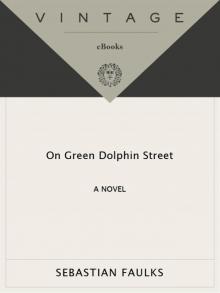 On Green Dolphin Street
On Green Dolphin Street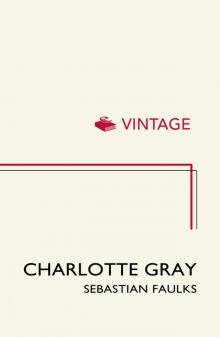 Charlotte Gray
Charlotte Gray A Broken World: Letters, Diaries and Memories of the Great War
A Broken World: Letters, Diaries and Memories of the Great War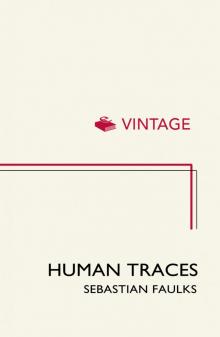 Human Traces
Human Traces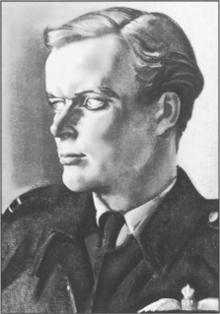 The Fatal Englishman
The Fatal Englishman A Broken World
A Broken World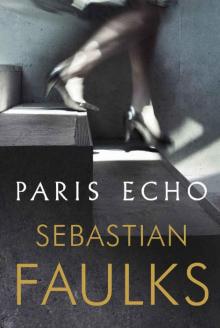 Paris Echo
Paris Echo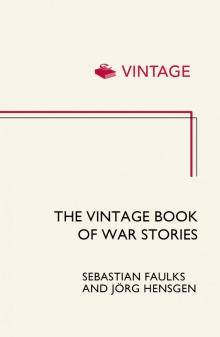 War Stories
War Stories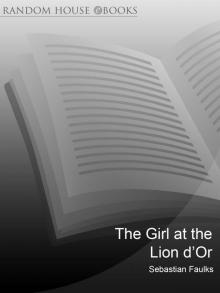 Girl At the Lion d'Or
Girl At the Lion d'Or